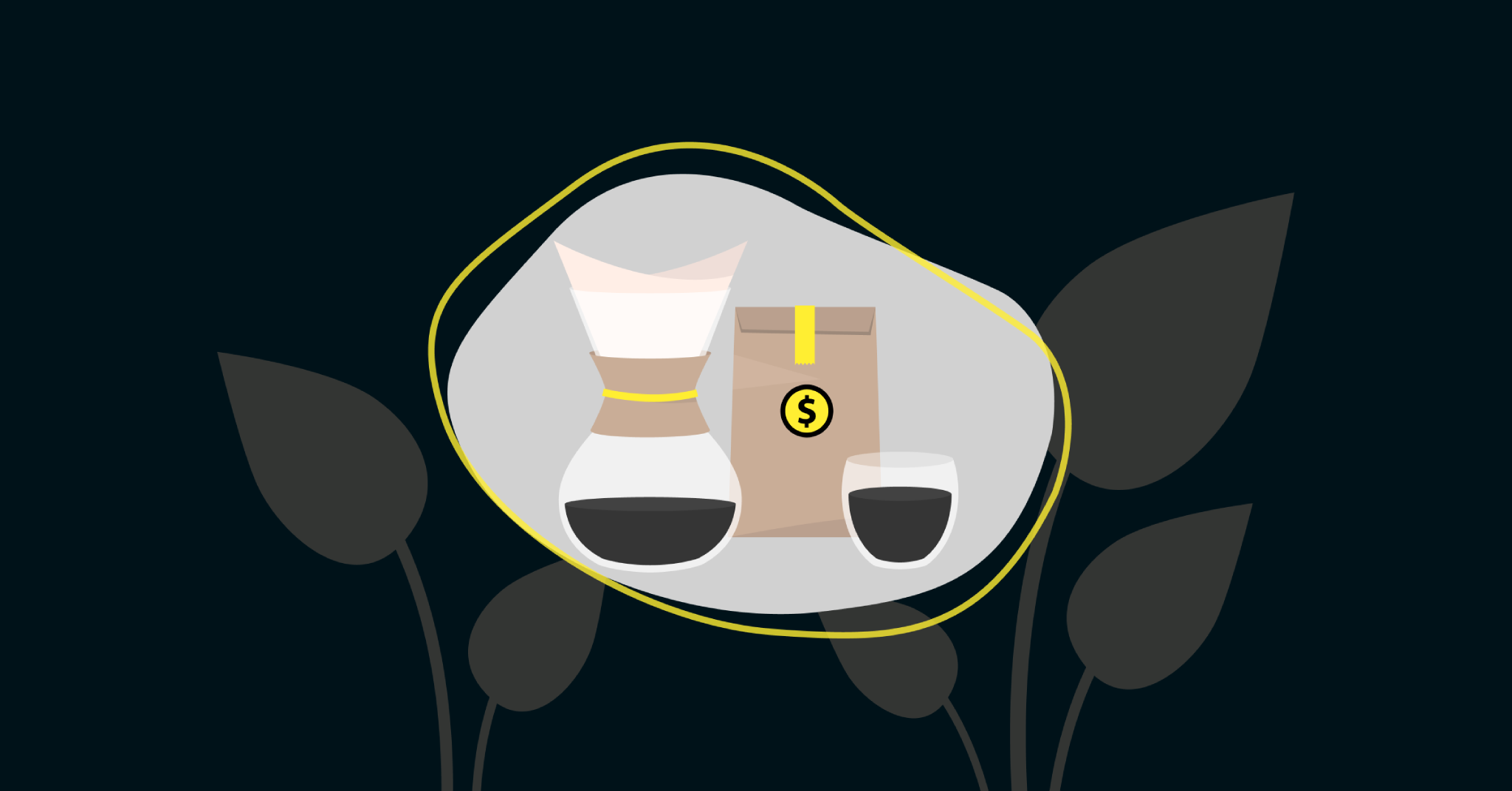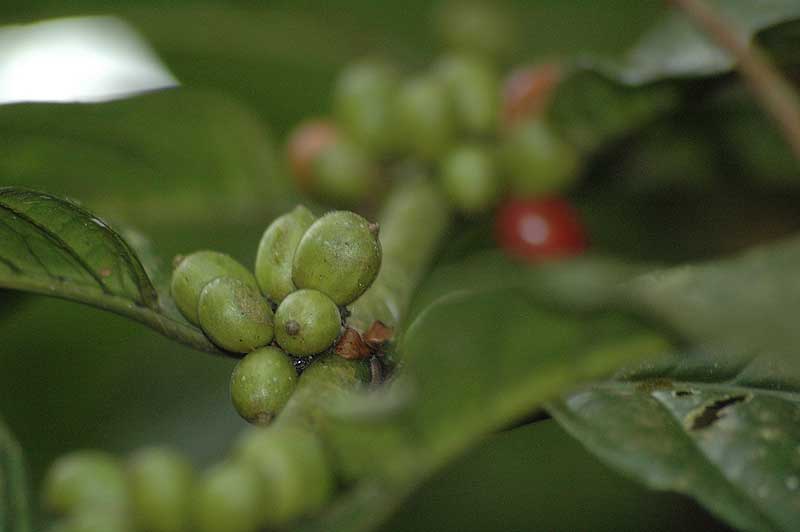
In July of this year, temperatures in Brazil fell below 0℃ around some of the major coffee growing areas such as Minas Gerais, and Sao Paulo, causing a damaging ‘black frost’. This occurs when there are low temperatures, and low humidity, rusting the leaves with frost burn, and it is a death sentence for young plants.
Whilst the more optimistic farmers frantically pruned their leaves in the hope that they could save the plant, others were forced to rip up entire crops and start again. On average, it takes up to 7 years for a coffee crop to recover from this kind of event. Even then, if a plant was young and not yet producing, it will never produce cherries.
So, you can see the issue here. The largest producer and importer of Arabica beans in the world suddenly has 10% less crops, which could lead to a projected drop in production of up to 50% in the 2022-23 harvest.
This year’s yield is already predicted to be almost 10 million bags lighter, but we won’t know the full scale of the loss of productivity until around mid to late September, 60 days after the event.
So, what does this mean for global coffee prices?
At a green bean level, we’ve already seen an increase of 10-20% this year, depending on the origin. This is mainly due to our old foe COVID, which has seen major kinks in the supply chain of Arabica such as limited or delayed shipping options, labour shortages in growing regions, and coffee companies stockpiling supplies.
There were also major roadblocks, and port closures earlier this year in Colombia, another coffee producing powerhouse, due to protests over government tax reforms. This meant that right in the middle of harvest season a major supplier was cut off from the world, exacerbating the problems caused by the pandemic alone.
Lightspeed customer, and Sample Coffee owner, Reuben Mardan believes that the “growth in demand, and the general cost of production,” along with COVID have pushed up prices, but the frost in Brazil is “the big one that will push up the commodity price, which will push all prices up.”
The frost in Brazil is predicted to increase prices to levels not seen since the mid-90’s when Brazil last had a black frost event on this scale.
How will this affect me?
If you’re a roaster, chances are you’ve already experienced some of the effects. The pandemic has seen your importers hike up their prices to cover the losses they took, and the protests in Colombia have done the same.
But, the chances are you’re also sourcing your beans from a range of coffee growing nations, and regions, and so the hit you’re taking is hedged somewhat.
However, if you’re a cafe owner, the price increase won’t have affected you too much.
This is due to the overall low cost of coffee within the greater cost of a cup of coffee. You see, the coffee itself accounts for only around 15% of the overall cost. The milk, staff wages, and rent make up the rest (milk especially).
And it’s because of this that the consumer is less likely to see an increase in what they pay for their daily fix.
 Other factors in keeping the prices down would be just how little Australia imports coffee from Brazil. At the moment only 15% of coffee imported into Australia is Brazilian. We much prefer a higher quality bean from producers in Central/South America, Africa, and the growing Asian industry.
Other factors in keeping the prices down would be just how little Australia imports coffee from Brazil. At the moment only 15% of coffee imported into Australia is Brazilian. We much prefer a higher quality bean from producers in Central/South America, Africa, and the growing Asian industry.
These higher quality beans obviously carry a higher price tag, meaning our suppliers have already been paying more for their green beans, and so are more insulated from the damages of the Brazilian black frost of 2021.
Our coffee snobbery has strangely saved us, which is a bizarre, yet comforting feeling not felt since we sent Starbucks back across the Pacific with its tail between its legs.
What can we do in the long run?
The short answer is, we can keep doing what we’re doing.
We can keep buying from smaller coffee producing nations who offer a higher quality product, putting our money behind these producers rather than the coffee producing superpower of Brazil, as we always have. They need it more, and their product is superior. Maybe one day they too can import as much coffee as Brazil, and the quality of the coffee will increase worldwide.
East Timor and Papua New Guinea
We can also continue backing the producers in places with emerging and growing popularity, like East Timor, and Papua New Guinea. These places are finally getting their feet under the table, producing some very high quality offerings, and it would be a crying shame if all of their progress was lost due to the pandemic and a frost-induced global price hike.
Australia: some true blue beans for your long black
Another area ripe for exploration is Australia itself. Whilst we’re definitely skewed heavily towards the coffee consumer end of the supply chain, rather than the coffee producer end, there has been a rise in coffee growing and production in Australia in recent years.
We can also look into different varietals other than the affected Arabica.
Most Australian roasters who know a thing or two have been sourcing different varietals for years due to the more interesting flavour profiles, differing acidity, and overall higher quality that these less-popular beans produce.
 Varietals such as Bourbon, Pacamara, the fabled Geisha, or Marsellesa all have benefits that could be leveraged in the midst of an Arabica shortage.
Varietals such as Bourbon, Pacamara, the fabled Geisha, or Marsellesa all have benefits that could be leveraged in the midst of an Arabica shortage.
Bourbon’s high yields could make up for the loss in production. Pacamara’s hardy durability, versatile growing conditions, and large cherries could make it an appealing replacement plant. And whilst Geisha is very difficult to maintain, and has a low yield, it does have a unique resistance to disease and a super high quality that, once perfected, could be harnessed to ensure more reliability. Not to mention Marsellesa’s resilience to heavy rainfall, a very likely source for more shortages, should freak global weather events continue to become less freakish, and more frequent.
Are the higher costs of coffee here to stay?
The correct answer is, yes and no.
We’re already seeing the world open up again after the pandemic. Vaccination rates are rising worldwide, and with them comes the return to a more normal way of life.
Borders are opening up again, with checks and quarantines still in place, but not at mid-pandemic levels. Workers movements have also freed up, meaning more people can return to employment along the entire supply chain, from farmers, to shipping company employees, through to port workers.
And with our relatively low investment in Brazilian coffee on the whole, our impact sustained is much smaller compared to countries like the United States, or Germany, meaning we have much less to bounce back from. We won’t need to court new producers because we’ve had relationships with them for years.
However, Mardan says that “consumers have to be prepared to pay a bit more for quality coffee. The price increase will put the squeeze on roasters, and they will be forced to increase their prices, or buy lower quality green coffee, which I believe has already happened.”
The Brazilian black frost event of 2021 has had a massive impact on the global coffee price. But thanks to our lack of reliance on a single coffee producing nation, our taste for a wide range of coffee varietals, and our insatiable desire for coffee perfection, once the dust has settled, there’s not many better places to be than Australia.
Subscribe to our fortnightly newsletter for all of your hospitality news, updates, and stories. Just enter your email into the form below to keep yourself in the loop.

News you care about. Tips you can use.
Everything your business needs to grow, delivered straight to your inbox.


